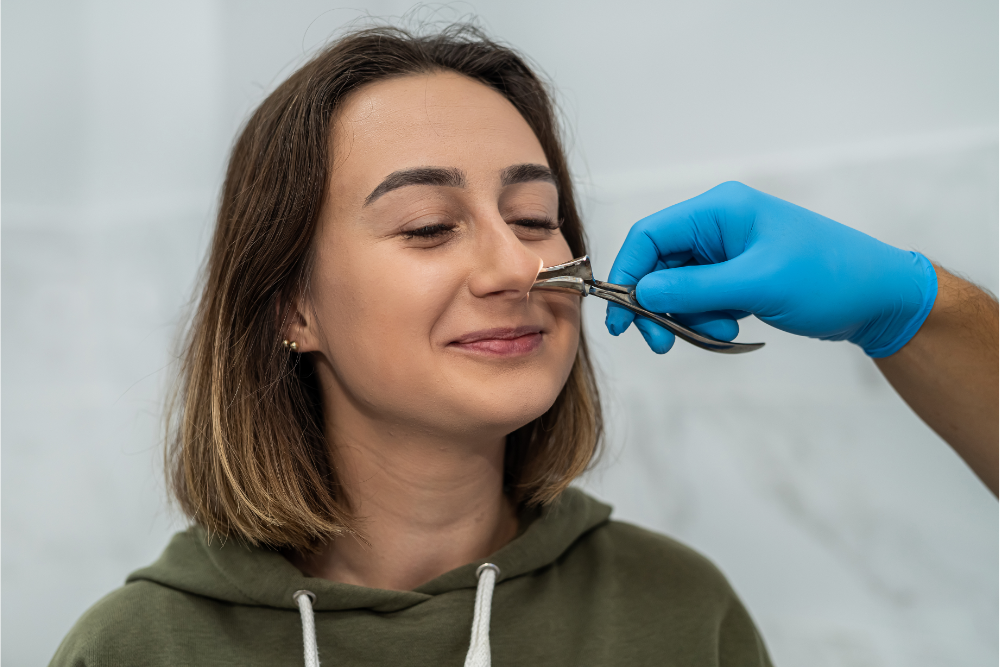Breathing is a fundamental aspect of life, and when your nasal passages become clogged or blocked, all of a sudden, there goes your breathing comfort and quality of life. Nasal obstructions can lead to difficulties in breathing, sleep disturbances, and even chronic sinus issues. Fortunately, advances in medical technology and surgical practices have led to the development of minimally invasive nasal procedures that effectively treat congestion and remove blockages.
These treatments offer patients shorter recovery times and cause significantly less discomfort compared to traditional nasal surgeries. Keep reading to learn how beneficial minimally invasive nasal procedures offered by sinus doctors in Los Angeles are for those experiencing sinus infections, allergies, and other upper respiratory conditions.
Nasal Obstructions
Nasal obstructions are conditions that narrow or block the nasal passages. The most common causes include:
Deviated Septum: A deviation in the nasal septum, the cartilage and bone dividing the nasal cavity into two nostrils, can cause one nostril to become smaller, leading to breathing difficulties.
Nasal Polyps: Soft, painless, non-cancerous growths on the lining of nasal passages or sinuses that can block airflow.
Chronic Sinusitis: Persistent sinus inflammation that leads to swelling and blockage, making it hard to breathe through the nose.
Enlarged Turbinates: Turbinates are bony structures covered with soft tissue inside the nose that can swell due to allergies or other irritants, leading to congestion.
Nasal Valve Collapse: Weakness or collapse of the nasal valves, the narrowest part of the nasal passage, can restrict airflow and cause breathing difficulties.
The Evolution of Nasal Surgery
Traditionally, conventional nose surgeries involve several large incisions and longer recovery times, leading to more postoperative discomfort. However, surgical techniques and medical technology used by today’s sinus doctors in Los Angeles are more refined, resulting in the development of several minimally invasive procedures. Each type offers distinct advantages to individuals seeking to alleviate certain nasal and breathing issues.
Types of Minimally Invasive Nasal Procedures
C/V ENT Surgical Group offers the following minimally invasive procedures to treat nasal obstructions and improve breathing.
Balloon Sinuplasty is recommended for those with chronic sinusitis. The procedure involves inserting a tiny balloon via a catheter into the blocked sinus passage. The balloon is slowly inflated to widen narrow nasal airways to improve drainage and airflow. Balloon sinuplasty is typically performed under local anesthesia and offers a quick recovery, with most patients resuming normal activities within a few days.
Functional Endoscopic Sinus Surgery (FESS): This procedure is reserved for those experiencing frequent or chronic sinus infections. FESS utilizes a thin, flexible tube called an endoscope, equipped with a camera and light, to view the sinuses and remove blockages or polyps. The surgery is performed through the nostrils, eliminating the need for external incisions. Endoscopic sinus surgery is highly effective for chronic sinusitis and nasal polyps, providing significant relief from symptoms and improved breathing.
In-Office Turbinate Reduction: Enlarged turbinates can obstruct airflow and cause chronic nasal congestion. Turbinate reduction can be performed via Coblation (cold laser), which shrinks the turbinate lining to widen the nasal passages. In-office turbinate reduction can also be performed as a submucous resection of the turbinates (SMR) that shaves away bone and mucosa tissues to open up the airways. SMR offers patients longer-lasting and more permanent relief than Coblation turbinate reduction nasal surgery. Both methods are minimally invasive and help restore normal breathing.
Septoplasty: Septum deviations and structural defects are a common cause of breathing problems. Deviated septum repair or septoplasty performed by a C/V ENT Surgical Group sinus doctor in Los Angeles utilizes specialized tools and endoscopes to correct the deviation with less disruption to the surrounding tissues, resulting in a faster recovery. The procedure is often combined with submucous resection (SMR) of the turbinates and nasal valve repair to address multiple breathing issues in a single surgical operation.
Nasal Valve Repair: Nasal valve collapse can significantly impair airflow. Minimally invasive nasal valve repair techniques, such as the use of cartilage grafts or implants, reinforce the nasal valves to keep them open. These procedures are often performed through small incisions or even through the nostrils, providing effective relief with minimal downtime.
In-office Nasal Procedures: Advances in technology have made it possible to perform many nasal procedures in an office setting under local anesthesia. These in-office treatments include balloon sinuplasty and radiofrequency turbinate reduction, offering convenience and minimal disruption to daily life.
Benefits of Minimally Invasive Nasal Procedures
The shift toward minimally invasive nasal procedures offers several compelling benefits for patients suffering from nasal obstructions and breathing difficulties:
Enhanced Precision: The use of advanced imaging and endoscopic techniques allows surgeons to target specific areas with high precision, minimizing damage to surrounding tissues.
Quicker Recovery: Patients have shorter recovery times and return to their normal activities within days. This is particularly advantageous for those who cannot afford extended downtime.
Reduced Postoperative Pain: Minimally invasive techniques cause less tissue trauma, resulting in reduced postoperative pain and discomfort. This translates to a more comfortable recovery experience.
Lower Risk of Complications: The targeted approach of minimally invasive procedures reduces the likelihood of complications such as infection, bleeding, and scarring.
Improved Aesthetic Outcomes: Because these procedures often avoid large incisions, they produce better aesthetic results, with little to no visible scarring.
High Success Rates: Minimally invasive procedures have proven to be highly effective in resolving nasal obstructions and improving breathing, leading to high patient satisfaction.
Convenience: Many minimally invasive procedures can be performed in an outpatient setting or even in-office, providing added convenience and eliminating the need for hospital stays.
The benefits of minimally invasive nasal procedures and their success rates are highly contingent upon the expertise of the sinus doctor in Los Angeles performing the procedure.
Who Can Benefit from Minimally Invasive Nasal Procedures?
Minimally invasive nasal procedures can be beneficial for a wide range of individuals experiencing nasal obstructions or breathing difficulties, including:
- Chronic Sinusitis Sufferers: Individuals with persistent sinus infections that are unresponsive to medical treatment can find relief through procedures like balloon sinuplasty or endoscopic sinus surgery.
- Allergic Rhinitis Patients: Those with chronic nasal congestion due to allergies can benefit from turbinate reduction or cryotherapy to reduce nasal swelling and improve airflow.
- Individuals with Deviated Septum: Individuals whose deviated septum is causing breathing problems can benefit from minimally invasive septoplasty to correct the deviation.
- Patients with Nasal Polyps: Individuals with nasal polyps obstructing their nasal passages can have these growths removed through endoscopic surgery.
- Those with Nasal Valve Collapse: Patients experiencing nasal valve collapse can benefit from minimally invasive repairs to strengthen and stabilize the nasal valves.
- Individuals Seeking Quick Recovery: Anyone needing nasal surgery but desiring a quick return to normal activities can benefit from the shorter recovery times associated with minimally invasive techniques.
Conclusion
Minimally invasive nasal procedures represent a significant advancement in the treatment of nasal obstructions and breathing difficulties. With their high precision, reduced recovery times, and lower risk of complications, these procedures offer a compelling alternative to traditional surgery. Whether you suffer from chronic sinusitis, a deviated septum, or nasal polyps, minimally invasive techniques can provide effective relief and significantly improve your breathing.
If nasal congestion or blockages are affecting your quality of life, consult a C/V ENT Surgical Group sinus doctor in Los Angeles to explore the minimally invasive nasal procedures available to improve your breathing.


